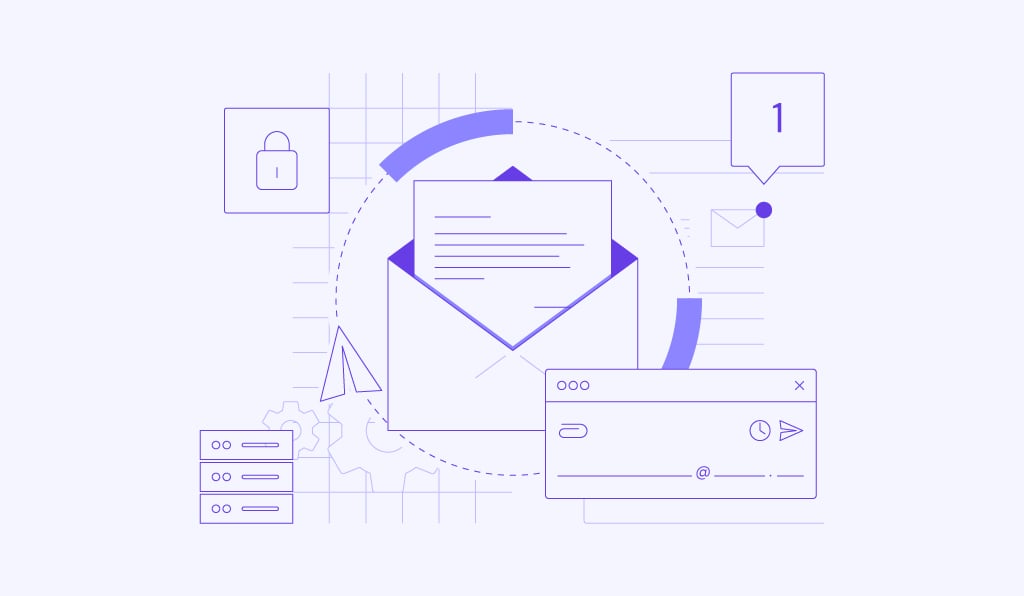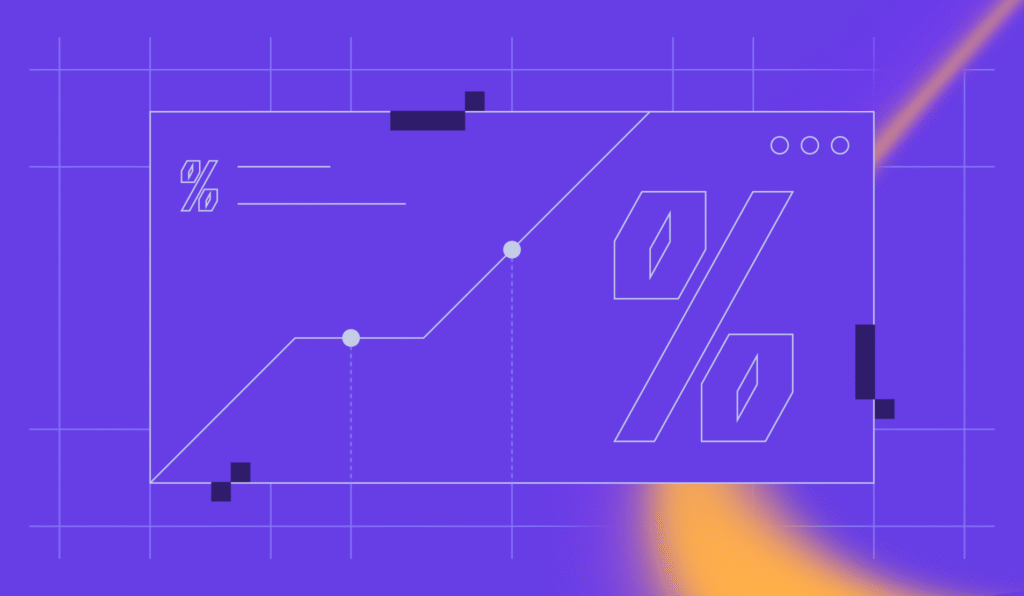10 email newsletter best practices to boost engagement
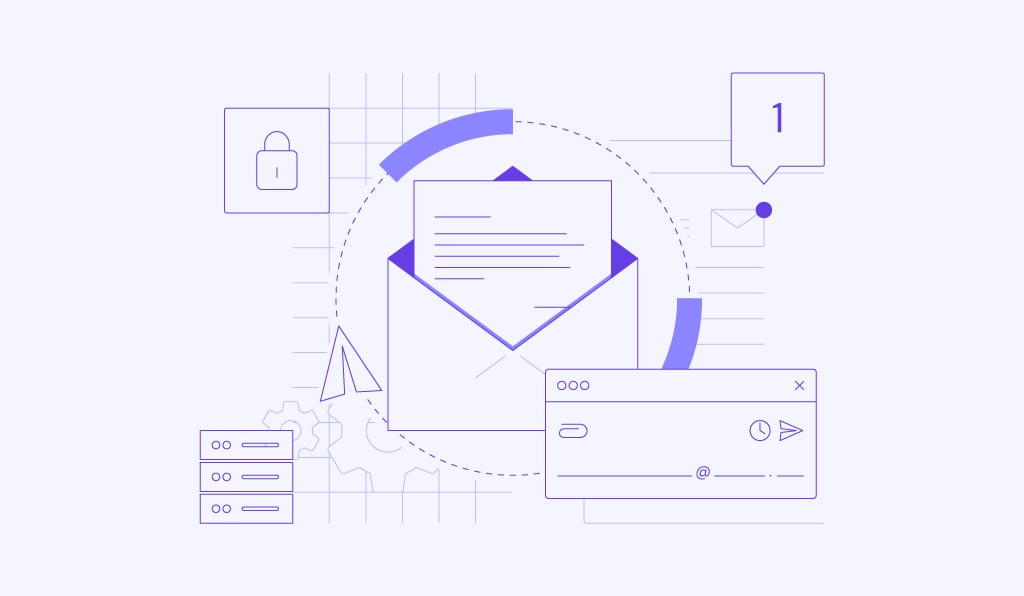
Email marketing remains one of the most effective channels to connect with your audience, whether you’re a small business owner, marketer, or content creator. A solid email newsletter strategy ensures every message you send delivers value and encourages readers to take action.
Here are 10 best practices for creating an effective email newsletter:
- Create catchy subject lines. The subject line is your first impression. Clear, engaging phrasing encourages subscribers to open your email.
- Add a clear call to action. Guide readers on what to do next with concise, action-oriented instructions that boost clicks.
- Prioritize giving value to your audience. Focus on providing helpful, relevant content rather than overtly selling to keep readers interested and engaged.
- Design a simple newsletter layout. Organize content with visual hierarchy, white space, and readable fonts to make emails easy to scan.
- Make your email newsletter mobile-responsive. With most emails opened on mobile devices, responsive design, thumb-friendly buttons, and large, readable text are essential.
- Ensure every image has an alt text. Alt text makes your content accessible to everyone, improves deliverability, and supports screen readers.
- Provide an easy unsubscribe option. A visible, easy-to-use unsubscribe link builds trust, ensures compliance with privacy regulations, and reduces spam complaints.
- Send your emails on a predictable schedule. Regular emails build trust and familiarity with your audience, making them more likely to open future campaigns.
- Group your audience. Tailor your content by grouping readers based on actions, preferences, or engagement level for higher relevance.
- Conduct split tests to improve email campaigns. Test elements like subject lines, CTAs, layouts, or send times to understand what resonates and continuously optimize your campaigns.
Following these tips is easy with an email marketing platform that streamlines automation, subscriber management, and A/B testing.
1. Write strong subject lines
A strong subject line plays a crucial role in the success of your email marketing strategy.
The subject line is the first thing recipients see in their inbox, so it has a direct impact on open rates. Even the most engaging email content won’t make a difference if your subject line fails to capture attention.
Here are tips for writing effective email subject lines:
- Keep it short and to the point. Aim for around 40-50 characters so it displays correctly on both desktop and mobile devices. A concise subject line conveys your message clearly and prevents it from being truncated.
- Spark curiosity, but stay relevant. Tease what’s inside the email without being misleading. For example, instead of a generic “New Blog Post,” try something like “Are You Making These 3 Common Email Marketing Mistakes?”
- Personalize when possible. Including the recipient’s name or referencing their past interactions makes your email feel more tailored and authentic.
- Show immediate value. Let readers know what they’ll gain by opening the email.
- Address a pain point or question directly. People are more likely to open emails that speak to their needs or challenges. For instance, “Struggling to Boost Your Open Rates? Try This Simple Fix.”
- Test and analyze. Use A/B testing to experiment with different tones, lengths, and keywords to see what resonates most with your audience.
Here’s an example from Zapier. The subject line “How we’re actually using AI inside teams” draws readers in by sounding genuine and human. It feels like an honest conversation that promises real, actionable insights and makes people curious enough to click and learn more.
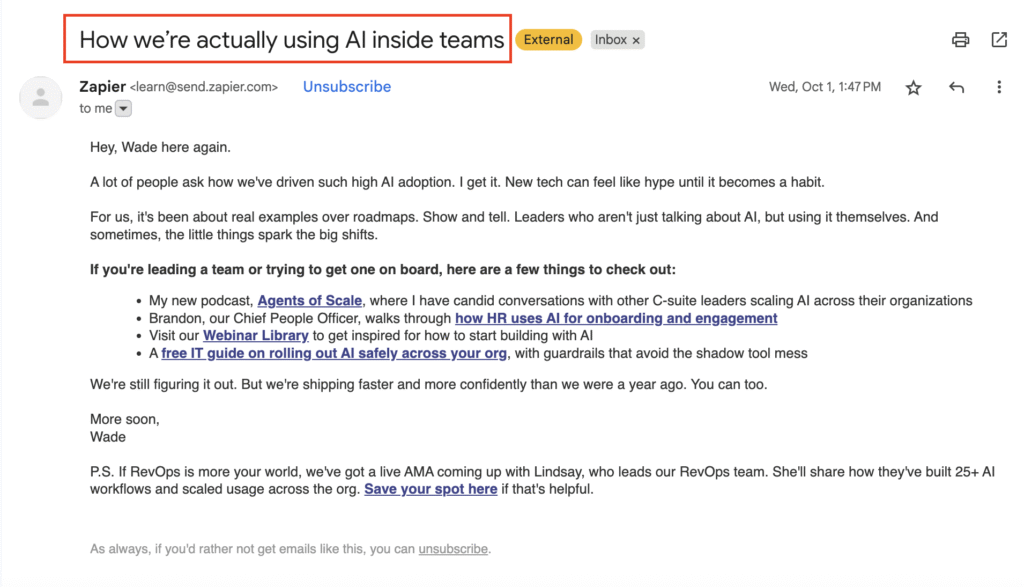
2. Add a clear call to action
The call to action (CTA) in your email influences your audience’s willingness to click and view the content you’ll direct them to. Therefore, it should clearly instruct your audience on the next step and encourage them to take action.
Use direct, active verbs that tell your audience precisely what to do, with phrases like “Download the Free Ebook,” “Start Your Free Trial,” or “Read the Full Guide”. Avoid vague instructions like “Click Here” that don’t communicate the benefit or value.
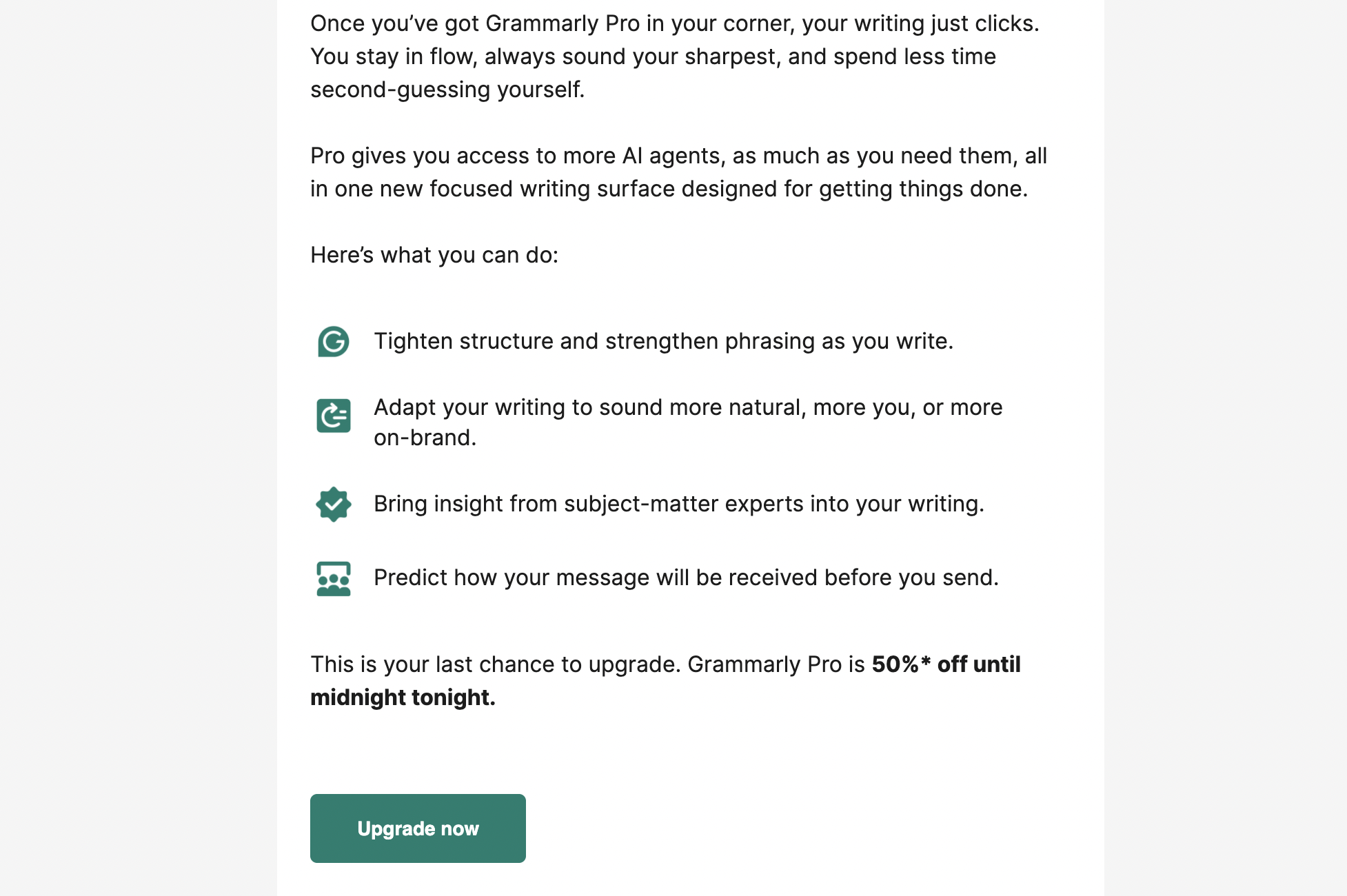
For maximum impact, place your CTA prominently at the end of your primary message. This ensures it’s visible whether your reader skims or reads through your content. You can also repeat CTAs within the text wherever it makes sense without making it feel pushy.
Lastly, make your CTA stand out using contrasting colors, buttons, or whitespace.
3. Deliver value over promotion
When planning an email newsletter strategy, prioritize content that your audience will find genuinely helpful and relevant. When recipients feel they’re gaining value, they’re more likely to stay engaged and trust your credibility.
Think about what your readers want to learn, not just what you want them to do. Share practical guides, how-to articles, or behind-the-scenes updates that solve real problems or spark curiosity.
For instance, Slack offers a free ebook to increase team productivity without adding more meetings. This provides immediate value to readers while subtly aligning with Slack’s core business purpose to help teams collaborate more efficiently.
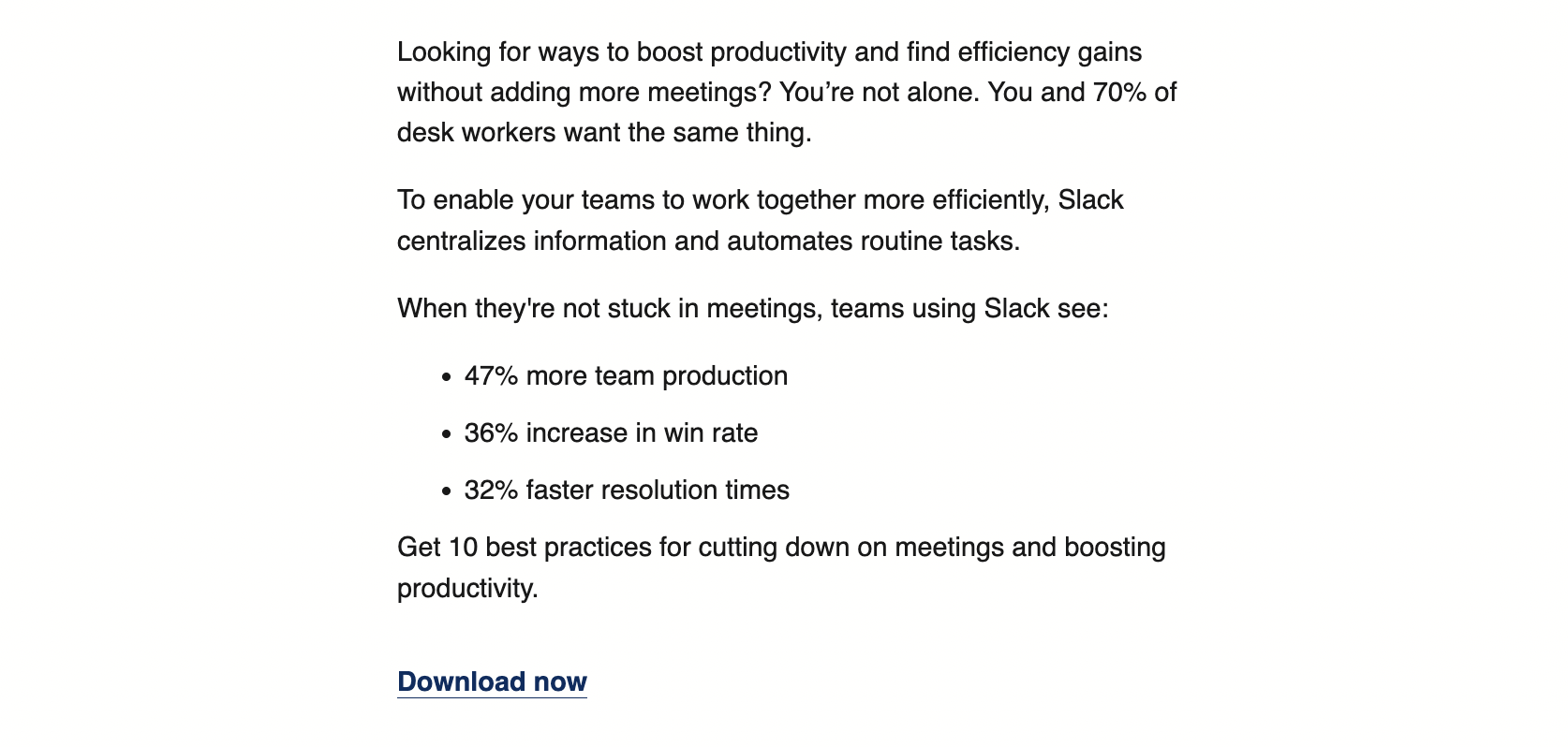
This approach turns your newsletter into a valuable resource rather than just a sales pitch. Over time, it strengthens relationships with your audience and enhances the effectiveness of your email marketing strategy.
4. Use a clean, simple newsletter layout
A well-designed newsletter makes your message easier to digest. A clean, simple layout helps readers instantly understand what your email is about without feeling overwhelmed.
The key is to organize a visual hierarchy that puts your most important message in the spotlight. Studies from Nielsen Norman revealed that users scan content quickly, following an F-shaped pattern and fixating less when layouts are cluttered. The Ubud Writers & Readers Festival’s newsletter below provides a great example of this implementation.
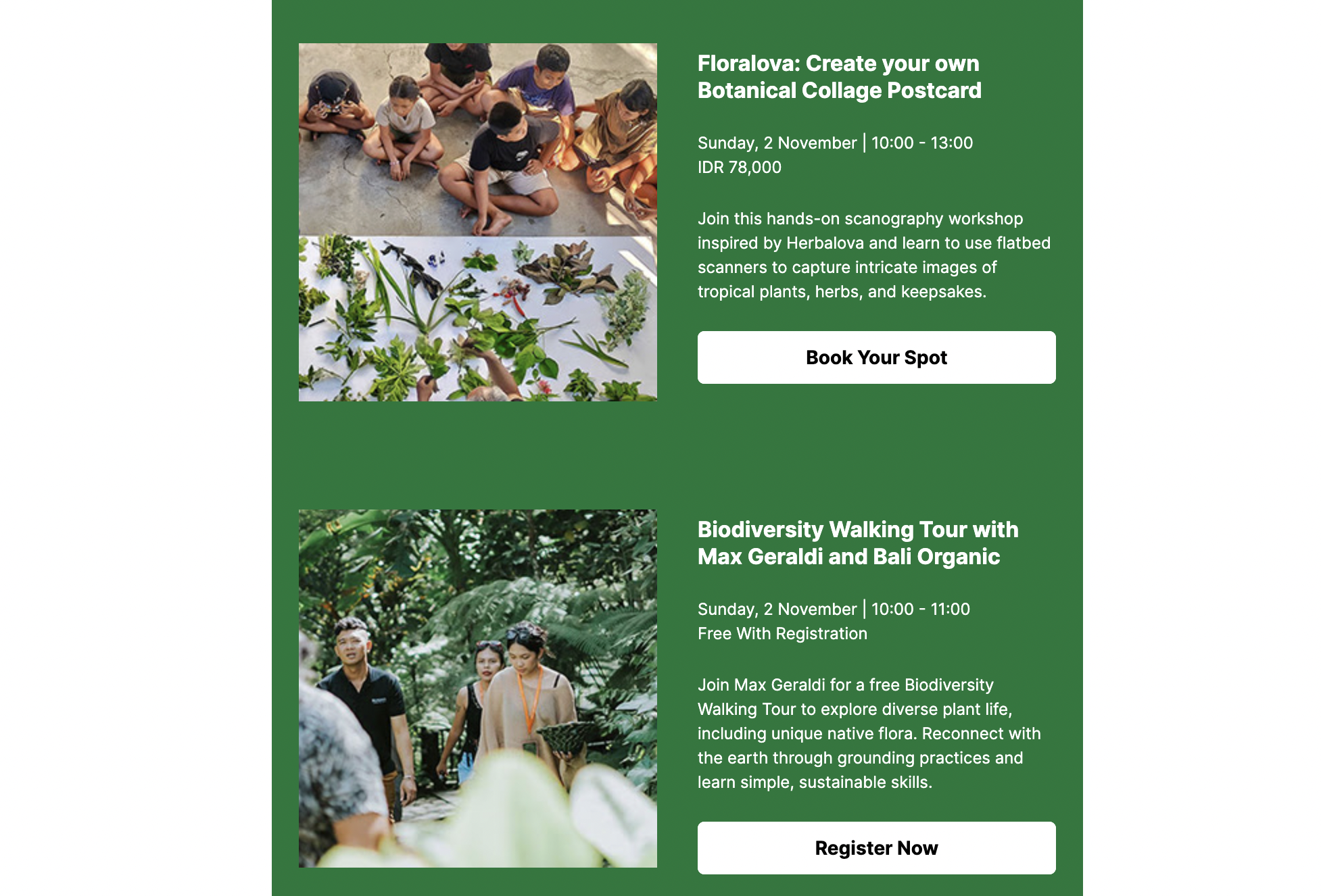
Pairing it with a fair amount of white space makes your content stand out and improves readability, making it easy for your audience to skim through.
Fonts and headers also play a significant role. Bold, clear headlines guide readers through your content, while easy-to-read body text makes your email feel effortless to scan.
In the body content, use short paragraphs, bullet points, and distinct calls-to-action to make your email flow naturally. Top them all off with clear section breaks to keep your layout organized and guide readers smoothly from one idea to the next.
➡️ Need inspiration? Explore our best email marketing campaign examples to see how established brands implement their newsletter strategies.
5. Design a mobile-first newsletter
A responsive design ensures that your emails look professional and perform optimally, no matter where your readers open them. Responsive email design increases unique mobile clicks by 15%, according to recent email marketing statistics.
With many people checking emails on their phones, designing a mobile-first newsletter is crucial. Optimizing email elements, such as buttons, images, and text, makes your newsletter easier to navigate and encourages more engagement from mobile users.
Start with a single-column format that’s easy to scroll through and avoids horizontal movement. Keep text concise and use a font size that keeps your content legible without zooming in.
Your CTA also needs to be large enough to tap comfortably, with sufficient spacing around links and buttons to prevent accidental clicks. Make sure images scale smoothly and keep your design lightweight to maintain fast loading times.
New to email marketing?
Learn how to create a newsletter and launch your first campaign confidently.
6. Add alt text to all images
Alt text, short for “alternative text,” is the description that appears when an image fails to load or when a screen reader interprets your email for visually impaired users. It may seem like a small detail, but it ensures that every subscriber understands your content.
Beyond accessibility, alt text also supports your email deliverability and engagement. When readers can still grasp your message without visuals, they’re less likely to abandon your email.
Additionally, descriptive alt text reinforces your call-to-action by guiding readers toward the next step even when visuals aren’t visible.
7. Make unsubscribing easy
Every email newsletter should give readers the freedom to opt out whenever they choose. When people know they can easily stop receiving your emails, they’re more likely to view your brand as transparent and respectful of their preferences.
Additionally, providing an unsubscribe option reduces spam complaints and helps maintain a strong sender reputation. From a compliance standpoint, including an unsubscribe link is mandatory under regulations like the General Data Protection Regulation (GDPR) in the European Union and the CAN-SPAM Act in the United States.
Beyond legal obligations, making the unsubscribe process clear and simple ensures a higher-quality email list. Subscribers who genuinely want to hear from you are far more valuable than those who stay reluctantly subscribed.
Place your unsubscribe link where readers expect to find it – commonly at the bottom of the email. Use a readable font size and color that’s easy to spot without blending into the background. See KKday’s newsletter below for a practical example.
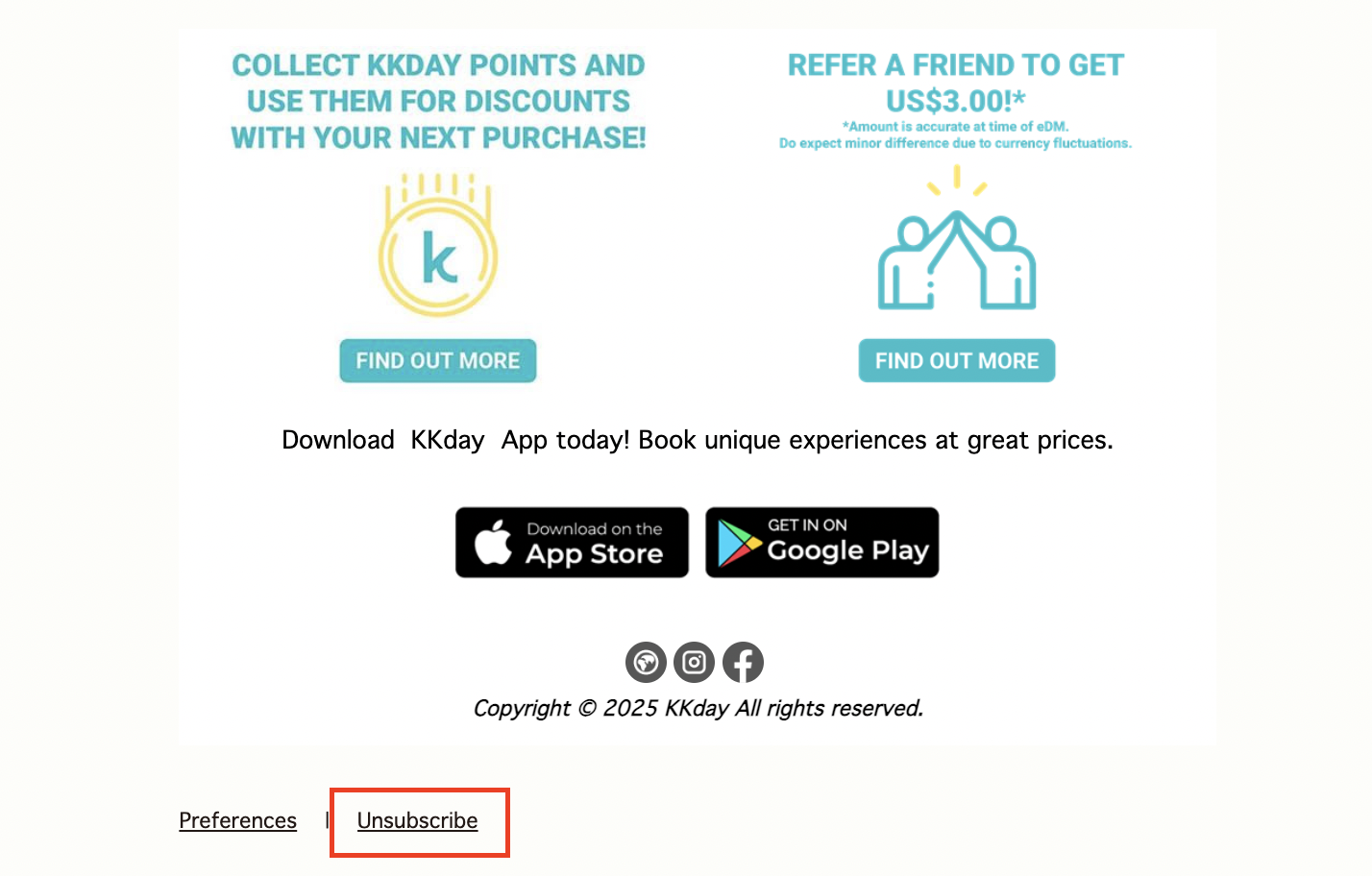
8. Stick to a consistent sending schedule
Sending newsletters on a regular schedule builds anticipation among your subscribers. When readers know when to expect your emails, they’re more likely to engage with them.
A predictable schedule also strengthens your brand’s reliability, as a consistent rhythm shows that you respect their time and value the relationship. Over time, this reliability helps turn casual readers into loyal followers.
As for how often to send, there’s no one-size-fits-all rule. What matters most is finding a cadence that aligns with your content and audience expectations. Aim for a frequency that keeps you top of mind without causing fatigue – typically once a week or every other week.
Send a monthly roundup of your latest blog posts, a weekly newsletter with curated tips or product updates, or a biweekly digest highlighting your most popular resources. Whatever schedule you choose, stick to it.
9. Segment subscribers based on behavior, demographics, and engagement
Audience segmentation matters, as not every subscriber shares the same interests or engagement level. Dividing your audience into smaller groups lets you deliver content that feels personal and relevant to each reader. This way, you can increase engagement rates while reducing unsubscribe rates.
Segmentation works best when you understand your readers’ stage in their journey with your brand. Here are the key segmentation criteria, along with the types of emails you can send:
- Behavioral data. Segment based on how subscribers interact with your previous emails, such as opens, clicks, or purchases. For instance, send follow-up recommendations to those who clicked a product link or a “thank you” email to recent buyers.
- Demographics. Group subscribers by age, gender, or location to tailor your messaging to each audience’s needs and interests. For instance, promote local events to subscribers in a specific city or curate age-appropriate content, such as student discounts, retirement planning tips, and payday sales.
- Interests and preferences. Identify what type of content readers engage with most and send more of what resonates with them. If a segment consistently clicks on food-related content, send them exclusive recipes or restaurant recommendations. If another group favors product updates, prioritize sneak peeks and new arrivals.
- Customer journey stage. Differentiate between new subscribers, loyal customers, and inactive users to deliver the right message at the right time. Welcome new subscribers with a short onboarding series, send loyalty rewards or early access launches to repeat customers, and offer a win-back incentive, like a discount or a helpful guide, to inactive users.
- Engagement level. Compare highly engaged readers to those who haven’t interacted in a while. Offer exclusive tips, early access, or personalized recommendations to loyal subscribers. Use gentle re-engagement campaigns or special offers to win back inactive ones.
Combine multiple criteria instead of relying on a single data point. Take advantage of your email platform’s automation features to dynamically update segments as reader behavior changes.
Additionally, consider setting up different types of automated campaigns tailored to each segment, such as onboarding sequences for new subscribers, cart recovery campaigns for shoppers, or loyalty updates for your most active customers.
10. Run A/B tests to improve results
A/B testing helps you understand what connects with your audience by sending two versions of an email and comparing their performance. This approach reveals what works best, allowing you to refine future campaigns for improved results.
Here’s how a basic A/B test works: set a goal for what you want to improve, divide your audience into two equal groups, and send a different version to each at the same time. Once you have a winner, apply those insights to future emails.
Here are newsletter elements you can A/B test based on your goals:
- Subject lines to see which phrasing boosts open rates.
- CTAs to discover which button text or color drives more clicks.
- Layouts or images to find the design that keeps readers engaged.
- Send times to identify when your subscribers are most active.
Most email marketing platforms include built-in A/B testing tools, allowing you to run experiments and track results.
Choose the right email marketing platform that supports your goals
Implementing newsletter best practices is easier with an email marketing platform. Most tools include features that simplify tasks like segmentation, automation, and A/B testing, helping you scale your newsletter as your audience grows.
If you’re new to email marketing, Hostinger Reach is a great place to start. This AI-powered tool lets you design professional, responsive newsletters by describing how you want them to look. Campaign management is seamless through an intuitive dashboard, and the platform comes with subscriber management, automation, and detailed analytics.

Here are a few other email marketing tools that cater to specific needs:
- Omnisend. A great choice for ecommerce brands that want to combine email, SMS, and push notification automation to boost conversions.
- MailerLite. Perfect for small businesses seeking an intuitive email marketing platform for designing and sending emails.
- Kit. Ideal for content creators looking to expand their audience reach through newsletters.
How to grow your email list?
Your email marketing efforts will have the most significant impact with a growing subscriber base. The key is attracting people who genuinely want to hear from you.
Here are practical ways to grow your list:
- Add sign-up forms to high-traffic areas of your website, like your homepage, blog posts, or checkout pages.
- Offer incentives like exclusive guides, discounts, or newsletter-only content to encourage sign-ups.
- Use pop-ups or slide-ins to capture attention at the right moment without disrupting the user experience.
- Promote your newsletter on social media to reach new audiences and drive more traffic to your sign-up form.
For a deeper dive with actionable strategies, check out our complete guide on how to build an email list.
All of the tutorial content on this website is subject to Hostinger's rigorous editorial standards and values.

